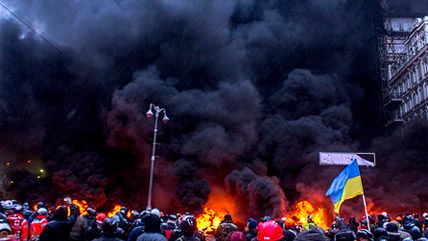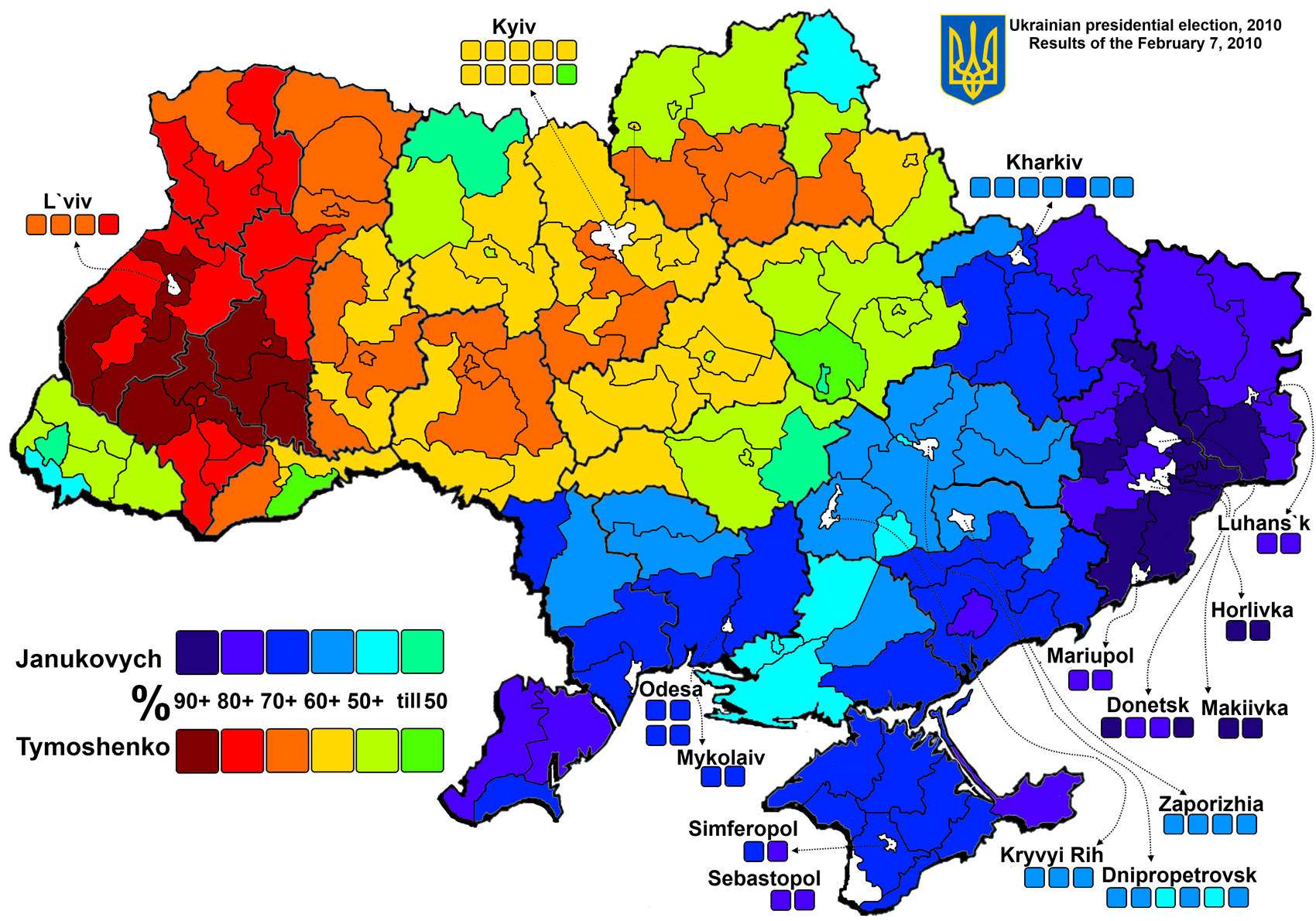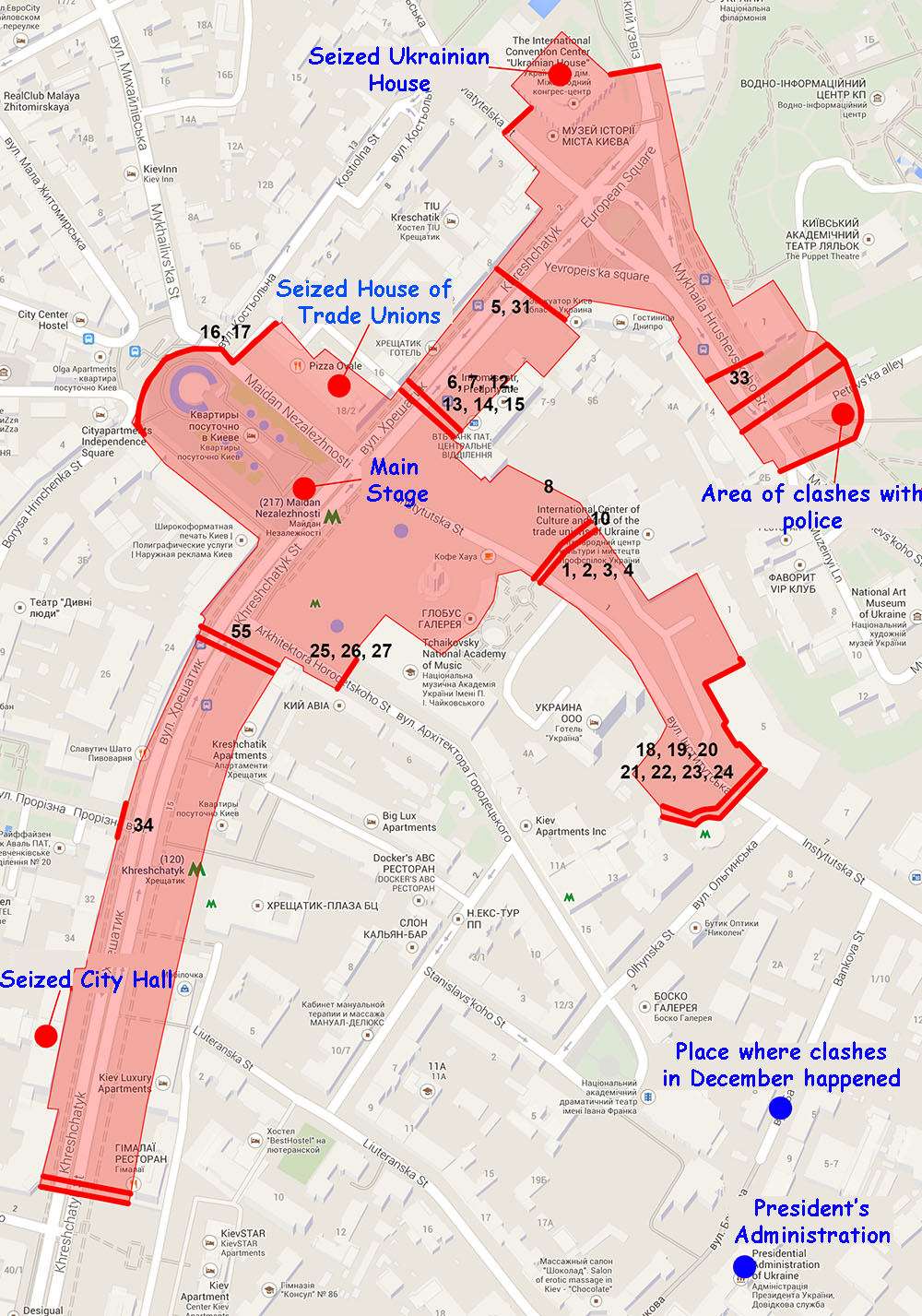Ukraine's Revolution Beyond the Chaos
It is fueled by a demographic-defying desire for democracy.

Ukrainians have lately barreled across American headlines with a display of their Olympic-level Molotov cocktail tossing skills and talent for fabricating catapults, provoking some to ask, what the hell is happening over there? While many articles recapitulate the basics—police are clashing with citizens who are protesting President Viktor Yanukovych's Kremlin-pressured u-turn on an economic association deal with the European Union (E.U.)—scant are reports on the government's slipping grip on key demographics and the dynamic and unified opposition.
Central to understanding the significance of the "Euromaidan" movement (meaning "European Square" and referring to the location where protests began in November), is a view of the nation's opposite geographical ends. Despite being mostly landlocked and about as flat as Kansas, "Ukraine" means "borderlands," as it has historically been a meeting point between east and west. A more literal translation of the name, and more illuminating for the precarious current events, would be "on the edge."

Seventeen percent of Ukraine's total population, concentrated heavily in eastern provinces, are ethnically Russian—the president included (Can you imagine the birther conspiracies?). Twenty-seven percent identify as both Russian and Ukrainian. Overlapping with this is 30 percent who still identify as Soviet. Russian language speakers are dominant in 11 of the country's 24 provinces. In 2010, the nation was unforgiving of his predecessor's failures, and the Russian-leaning demographic, along with older voters, tipped the scale in Yanukovych's favor. One major Russian politician goes so far as to claim that Yanukovich will deliver eastern Ukraine back to Russian rule.
This has created tension with the other side of the country, as "people in western Ukraine see themselves as European," explains Slava Dvornikov, a resident of Kiev and participant in Euromaidan. Since gaining independence in 1991, Ukraine's younger voters and westerners consistently align themselves with more liberal, democratic values found elsewhere in Europe. They have in the last two presidential elections consistently opposed Yanukovych.
Orlando Figes of Foreign Affairs extrapolates that these historical demographic differences are too deep-seated for reconciliation.
Times are changing, though. "This is a revolution," asserts Paul Goble of The Institute of World Politics. "It has been an article of faith for 25 years in Moscow and Washington that the ethnic Russians in Ukraine will hold Ukraine in the Russian orbit," but "they haven't come out. There hasn't been the kind of action people predicted."
In fact, protests have spread deep into the east. World Affairs' Alexander Motyl writes that "for 500 marchers to assemble in Donetsk," normally Yanukovych's most supportive province, "is the equivalent of 50,000 in Lviv or 500,000 in Kiev," which are in the west and center, respectively.
Ethnicity and age take a backseat to hunger.
"It's not just young males fighting with police, it's old grannies supplying them with Molotov cocktails and other supplies," says Nikita Komaroff, who lives just blocks from the Euromaidan encampment.

"People see Yanukovych's cronies getting richer while everyone else gets poorer," suggests Dvornikov. People throughout Ukraine are becoming increasingly dissatisfied not only with the president's soft spot for the Kremlin, but the corrupt dealings domestically that have secured the nation as one of the most economically repressed in the world. Despite being resource rich and one of Europe's largest countries, it has a GDP comparable to Utah's.
The dashed prospect of economic improvement was merely the straw that broke the camel's back. From E.U. nations to Ukraine to Russia the respective rankings by Freedom House are free, partially free, and not free. Ukraine has been slipping in the wrong direction. The people are galvanized to literally fight for their rights after witnessing Yanukovych consolidate power, trample peoples' rights, and allow riot police to use deadly force.
"That's why 500,000 people came into the streets. When 10,000 people came into the streets and the police attacked them, they had to show that they are not slaves," Komaroff states
The movement now occupies government buildings in eight regions. At the heart of the protests in Kiev, they control several blocks of streets and are inching toward the president's office. So, what happens next?
Radio Free Europe questions the likelihood of Ukraine successfully emerging from this revolution as a more liberal nation. For a nation younger than the Nintendo NES, Ukraine already has a spotty record on reform.
This precedence, coupled with a flood of fiery and bloody photographs leads The New Criterion editorial board to predict an unsavory fate of "post-democratic totalitarianism" whether or not Yanukovych is ousted. And, Vladimir Pastukhov, an adviser to the Constitution Court of Russia, worries that the lack of central leadership in Ukraine's opposition will doom the movement.
Violence between the protesters and law enforcement must not be conflated with the internal affairs of Euromaidan. The movement is far from a state of chaos. Rather, its multitude of factions are coordinated and cooperative with one another.
As Elena Zaharchenko reports in Ukrainska Pravda, behind the barriers exists "a special atmosphere" of "peace and order."
"This is the remarkable display of the rise of a new Ukrainian nation, a civic nation," says Goble, who notes that for a revolution, the death toll is remarkably low. "What we're seeing is more important than the Orange Revolution. This is a much broader and deeper one."
In American media, perhaps the most underreported aspect of this affair is what's really happening within the encampment: Thousands of people from across both the country and political spectrum are circulating together spontaneously and working together harmoniously, yet in decentralized fashion.
"Maidan is totally crowdfunded," notes Dvornikov. "There are no police but there is no crime, either." The encampment is littered with donation bins for medicine, food, security and other needs. Its' fortifications continue to grow quickly and to an impressive scale. Web-based crowdfunding and other internet initiatives aimed at transparency – almost inconceivable during Ukraine's last major protests a decade ago – also play a role in this gritty push for a representative democracy.
And, lacking a singularly powerful opposition leader may actually be "the strongest part of the Ukrainian revolution," as Komaroff suggests. Yanukovych tried to bribe two of Euromaidan's spokesmen with the opportunity to become prime minister and deputy prime minister, but they turned down the offer. Likewise, they have vowed to work together to win national elections instead of fighting amongst themselves. Komaroff explains that despite three major factions existing with conflicting ideologies, "the opposition leaders are all very loyal to each other. It's a good situation."
But that's not the only check on their power. Disillusioned by years of unkept presidential promises, they have changed their tactics and are taking a more active approach to leadership. "People support the opposition leaders," says Komaroff, but "no one among the leaders can control Maidan, because there are a lot of different views. The people control their leaders."
Ukraine is on the edge of a new era. Yanukovych is rapidly losing support while Euromaidan makes gains. Caution is always a good approach to revolutions, but many in Ukraine are actively demonstrating a new political mindset aimed beyond old ethnic divides, and instead toward smaller, less corrupt, more representative government.




Show Comments (12)